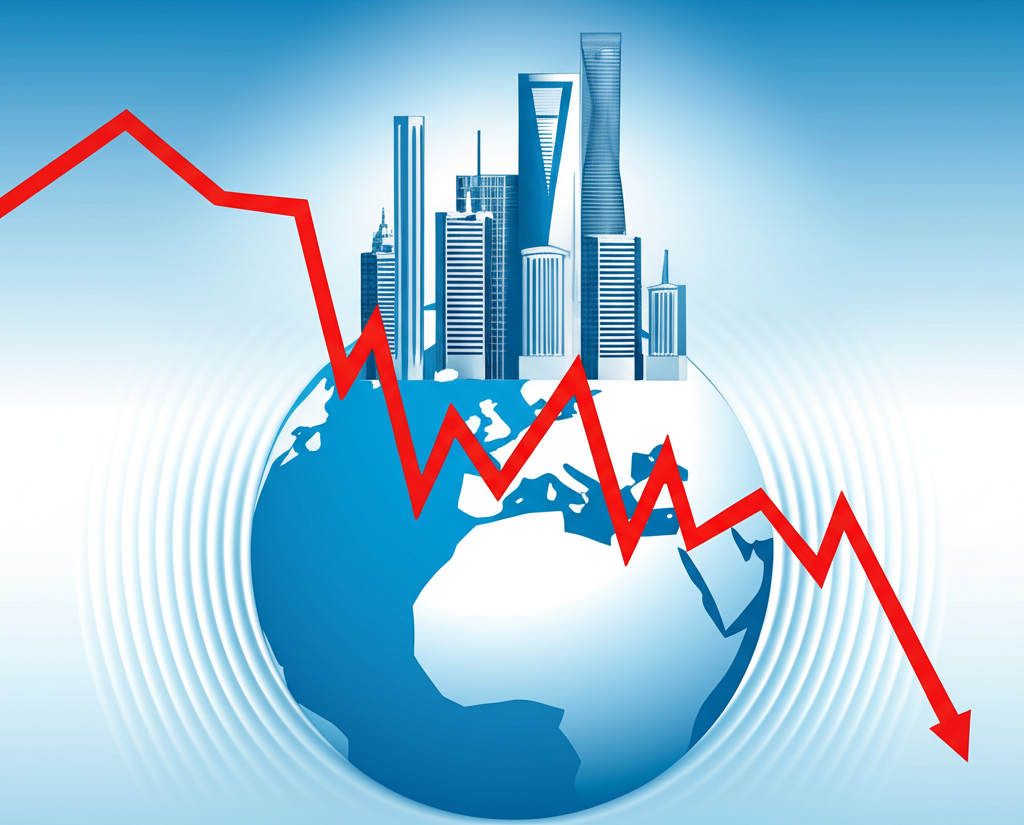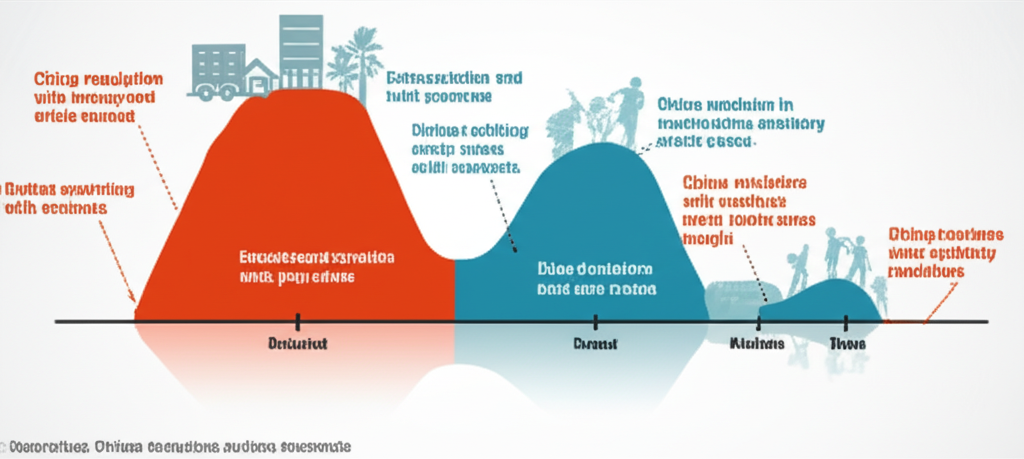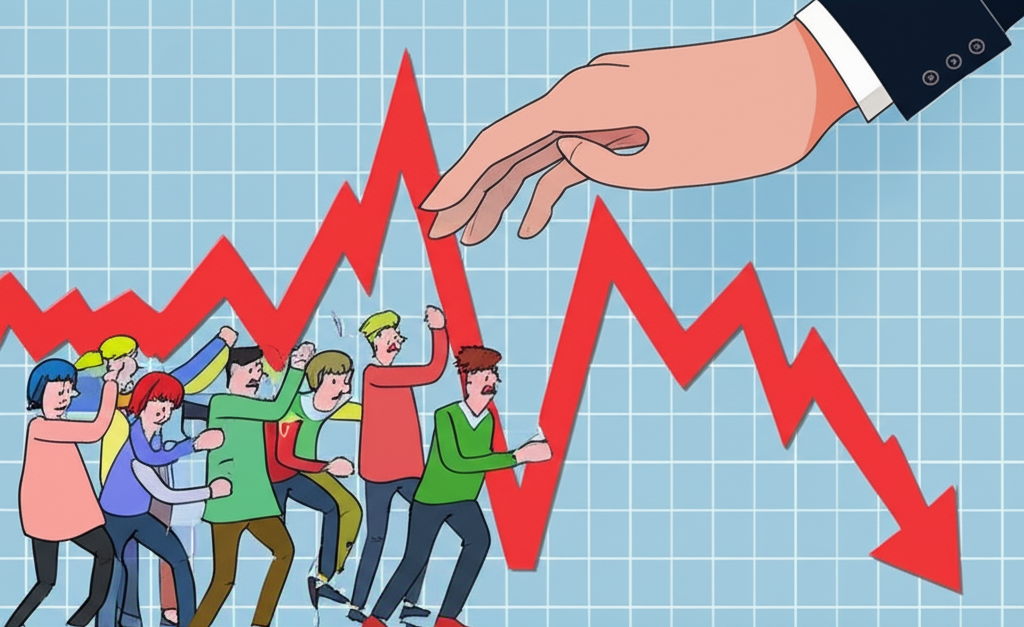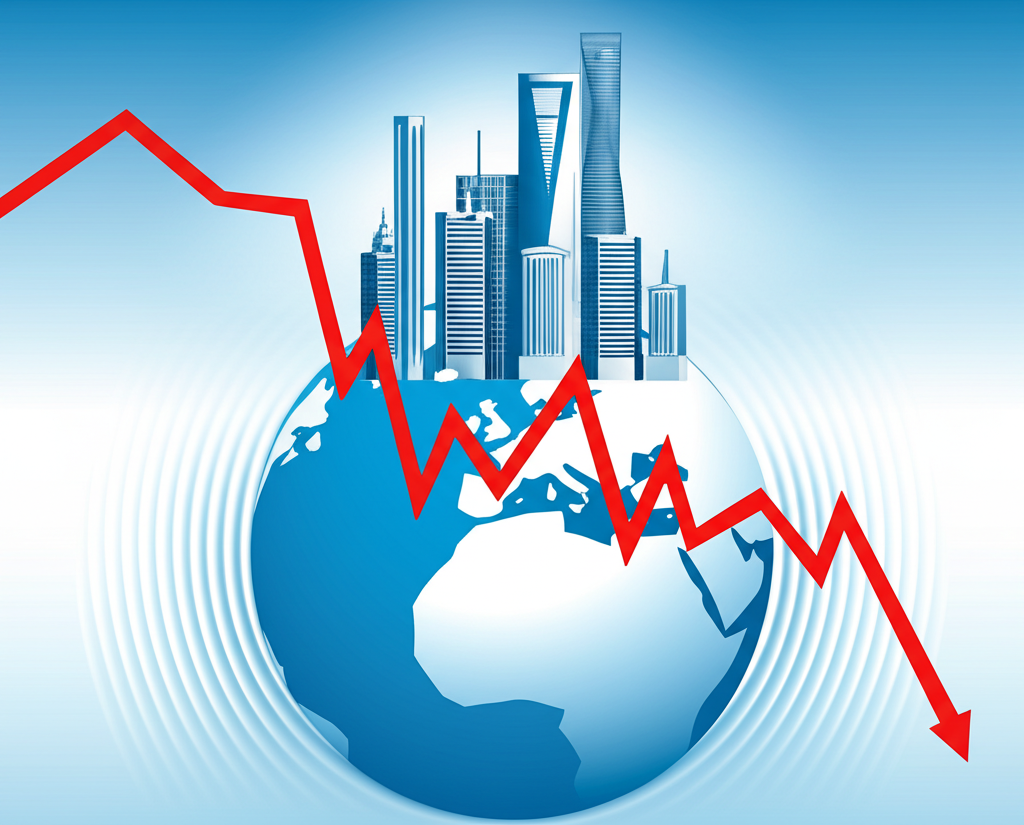China’s Stock Market Turbulence: A Deep Dive into Systemic Risks and Global Implications

Introduction: The Volatility of China’s Stock Market
Over the past four decades, China has undergone one of the most dramatic economic transformations in modern history, emerging as the world’s second-largest economy. Yet beneath the surface of rapid industrialization and urban expansion lies a financial system prone to abrupt swings—particularly in its equity markets. While growth statistics often dominate headlines, the story behind the numbers reveals a pattern of intense volatility, where surging optimism can quickly give way to steep sell-offs and widespread investor anxiety. A stock market crash in China typically refers to a sudden and severe drop in major indices—such as the Shanghai Composite—often exceeding 20% in a matter of weeks, wiping out vast amounts of wealth and shaking confidence both at home and abroad.
These episodes are more than just financial events; they reflect deeper structural tensions within China’s evolving economic model. For investors, policymakers, and global market observers, understanding the root causes and ripple effects of these downturns is essential. This analysis explores the historical trajectory of China’s stock market collapses, unpacks the economic, regulatory, and behavioral forces that fuel them, and assesses their broader implications for domestic stability and international markets. By examining past crises and ongoing reforms, we aim to provide a clearer picture of what drives China’s market turbulence and what the future may hold.
A Historical Perspective: Major Chinese Stock Market Crashes

China’s equity markets have followed a cyclical rhythm—periods of explosive growth followed by sharp reversals. This boom-and-bust pattern is not random but deeply tied to the country’s unique blend of state-led economic management, evolving financial regulations, and a retail-dominated investor base that reacts swiftly to policy signals and market sentiment.
The 2015-2016 Turmoil: A Case Study in Market Intervention
One of the most defining moments in China’s financial history unfolded between mid-2015 and early 2016. After a euphoric bull run—fueled by easy credit, widespread margin trading, and a surge in first-time investors—the Shanghai Composite Index lost over 30% of its value in just six weeks. The selloff erased an estimated $3 trillion in market capitalization, triggering panic among millions of retail investors who had poured life savings into the market.
The causes were layered. On one side, excessive leverage allowed investors to amplify gains during the upswing—but magnified losses when sentiment turned. On the other, underlying concerns about a slowing economy and weakening corporate earnings began to surface, undermining confidence. As the decline accelerated, the government responded with an unprecedented intervention strategy. State-backed “national teams” began buying shares directly, short selling was banned, major shareholders were prohibited from exiting their positions, and IPOs were suspended. Circuit breakers were introduced to halt trading during extreme drops, but their implementation backfired—trading was suspended almost immediately after triggering, intensifying fears of market dysfunction.
While these measures stemmed the immediate freefall, they raised serious questions about the balance between stability and market integrity. Critics argued that the interventions distorted price discovery and rewarded speculative behavior, while doing little to address systemic flaws. Moreover, the eventual withdrawal of state support led to renewed volatility in early 2016, underscoring the difficulty of exiting such large-scale market involvement without reigniting panic.
Earlier Episodes: Patterns of Growth and Instability
The 2015–2016 crisis was not China’s first brush with market collapse. In 2007, the Shanghai Composite soared to record highs amid a speculative frenzy, only to lose nearly two-thirds of its value the following year. That downturn was driven by a confluence of factors: the global financial crisis, tightening monetary policy at home, and a sharp correction in asset prices. The episode revealed how vulnerable China’s markets were to external shocks—even as the country maintained strong GDP growth.
Other corrections have occurred throughout the market’s relatively short history. In 2013, a liquidity crunch caused a spike in interbank rates, spooking investors. In 2018, trade tensions with the U.S. and concerns over rising corporate debt triggered another significant pullback. Each episode, while distinct in trigger, shares common threads: a reactive regulatory stance, a surge in retail participation during rallies, and a tendency for rapid sentiment shifts. These recurring cycles suggest that while China’s economy has matured, its capital markets remain in a formative stage—one where emotion often outweighs fundamentals.

Root Causes: Why China’s Stocks Crash
To understand why China’s stock market crashes with such frequency and severity, one must look beyond short-term triggers and examine the deeper structural and institutional factors that shape investor behavior and market dynamics.
Economic Slowdown and Structural Challenges
At the heart of many market downturns is a broader economic transition. After decades of double-digit growth, China has entered what policymakers call the “new normal”—a phase of slower, more sustainable expansion. This shift, while necessary, has created headwinds for corporate profitability and investor expectations. Industries once powered by infrastructure spending and export demand are now facing overcapacity, while the transition to a consumption-driven economy has been uneven.
Additional structural challenges compound the issue. An aging population reduces labor supply and increases fiscal pressure on pensions and healthcare. High levels of corporate and local government debt raise concerns about financial stability. And efforts to rebalance the economy—away from investment and toward domestic demand—have yet to fully materialize. When economic data signals weakness, particularly in industrial output or retail sales, markets react swiftly. The World Bank’s data on China’s GDP growth reflects this gradual deceleration, which, while expected, continues to weigh on investor sentiment.
The Shadow of the Property Market Crisis
No discussion of China’s financial risks is complete without addressing the property sector. For years, real estate has been a primary engine of growth, accounting for nearly 30% of GDP when including related industries. But a model built on high leverage, speculative investment, and land-based financing has reached a breaking point. The collapse of major developers like Evergrande and Country Garden has exposed systemic vulnerabilities, with hundreds of thousands of homes left unfinished and local governments facing a fiscal shortfall as land sales dry up.
The fallout extends directly into the stock market. Banks hold trillions in property-related loans, and their balance sheets are under scrutiny. Construction firms, materials suppliers, and financial institutions tied to real estate have seen their valuations plummet. More importantly, the crisis has shaken household confidence—nearly 70% of Chinese household wealth is tied to property. As prices fall and projects stall, consumers pull back on spending, creating a negative feedback loop that affects broader economic performance and, by extension, equity valuations. Recent reports by Reuters highlight how the sector’s distress continues to deepen, with no clear resolution in sight.
Regulatory Crackdowns and Policy Uncertainty
The Chinese government’s approach to market regulation often prioritizes social stability and long-term strategic goals over short-term market sentiment. This was evident in the sweeping regulatory campaigns launched in the early 2020s, targeting tech giants, private education firms, and ride-hailing platforms under the banner of “common prosperity.” While these moves aimed to curb monopolistic practices and reduce inequality, they caught investors off guard. Companies like Alibaba and Didi saw their market values slashed overnight as new rules reshaped entire industries.
The unpredictability of these interventions creates a climate of uncertainty. Foreign investors, in particular, struggle to assess risk when policy shifts can be abrupt and poorly communicated. Even domestic investors, accustomed to reading between the lines of official statements, find it difficult to anticipate regulatory moves. This lack of transparency can trigger capital flight, especially when combined with other stressors like economic slowdown or geopolitical friction.
High Retail Investor Participation and Behavioral Factors
Unlike the U.S. or Europe, where institutional investors dominate trading volume, China’s stock market is driven largely by individual investors. Retail participation accounts for an estimated 60–80% of daily turnover on the Shanghai and Shenzhen exchanges. This demographic tends to be more emotionally driven, reacting quickly to news headlines, social media trends, and market momentum rather than conducting in-depth fundamental analysis.
The prevalence of margin trading further amplifies volatility. During bull markets, investors borrow heavily to chase gains, inflating asset prices beyond their intrinsic value. When the market turns, margin calls force rapid liquidations, creating a self-reinforcing cycle of selling. The absence of widespread risk management tools—such as stop-loss orders or diversified portfolios—means that many investors are left exposed during downturns. This behavioral pattern contributes to the exaggerated swings that characterize China’s market cycles.
Geopolitical Tensions and Capital Outflows
China’s relationship with the West, particularly the United States, adds another layer of complexity. Escalating trade tensions, technology restrictions, and mutual sanctions have created an environment of strategic rivalry. U.S. delisting threats for Chinese firms, export controls on advanced semiconductors, and investment screening mechanisms have all contributed to a sense of financial decoupling.
For investors, this means heightened risk. Foreign portfolio inflows have become more volatile, with capital exiting during periods of heightened tension. Chinese companies with global operations face increased scrutiny, while multinational firms reassess their exposure to the Chinese market. Geopolitical uncertainty doesn’t just affect sentiment—it alters the fundamental calculus of investing in China, making long-term commitments more difficult to justify.
The Ripple Effect: Impacts of a Chinese Stock Market Crash
A major downturn in China’s stock market is never an isolated event. Its effects radiate outward, influencing domestic economic conditions, global financial stability, and international relations.
Domestic Economic Stability and Consumer Confidence
When stock prices collapse, the immediate impact is felt in household balance sheets. Millions of Chinese families have direct or indirect exposure to equities, either through individual accounts or wealth management products. A sharp decline in asset values reduces perceived wealth, leading to a pullback in consumer spending—a critical driver of economic growth. This “wealth effect” can slow retail sales, dampen demand for durable goods, and weaken overall economic activity.
Businesses are also affected. With equity financing becoming harder to access, companies may delay expansion plans or cancel IPOs. Reduced consumer demand can lead to layoffs, particularly in sectors like tech, real estate, and consumer services. The government, ever sensitive to social stability, may respond with stimulus measures, but these often come with trade-offs, such as increased debt or inflationary pressures. In extreme cases, widespread financial losses could fuel public discontent, posing a political challenge to the ruling party.
Global Market Contagion and Systemic Risk
Given China’s role as a global manufacturing hub and the world’s largest trading nation, a major equity crisis there can trigger international spillovers. Financial markets are tightly interconnected, and a sharp selloff in Shanghai or Shenzhen can quickly spill over to Hong Kong’s Hang Seng Index, U.S. indices like the S&P 500, and European benchmarks.
Several transmission channels exist:
- Investor Sentiment: Global investors, seeing panic in China, may adopt a risk-off stance, selling off emerging market assets and even pulling back from developed markets.
- Commodity Demand: China is the top importer of oil, copper, iron ore, and agricultural products. A slowdown reduces demand, sending prices lower and hurting exporters like Australia, Brazil, and South Africa.
- Supply Chain Disruptions: A domestic economic contraction could disrupt production and logistics, affecting companies that rely on Chinese manufacturing, from automakers to electronics firms.
- Foreign Investment Exposure: Multinational corporations with significant revenue from China—such as Apple, Tesla, or Nike—may see earnings downgrades, impacting their stock prices worldwide.
Implications for US-China Economic Relations
A Chinese stock market crash could further strain the already tense relationship between Beijing and Washington. On one hand, a weakened Chinese economy might reduce its ability to compete globally, potentially easing U.S. concerns about strategic rivalry. On the other, it could lead to more aggressive export policies or currency devaluation to stimulate growth, triggering new trade disputes.
U.S. policymakers may view a crisis as an opportunity to advance technological decoupling or tighten investment restrictions. Conversely, financial instability in China could prompt calls for greater cooperation, particularly if global markets are at risk. Either way, the economic interdependence between the two nations ensures that a crisis in one will have tangible consequences for the other.
Government Responses and Future Outlook
The Chinese government has consistently demonstrated its willingness to act decisively when financial stability is at stake. But the nature of these interventions—and their long-term consequences—remains a subject of intense debate.
Past Interventions and Their Effectiveness
In response to past crises, Beijing has deployed a range of tools: state funds purchasing blue-chip stocks, suspending IPOs, halting trading in extreme cases, and restricting short selling. These actions often succeed in calming markets in the short term, but they come with trade-offs. By propping up prices, the government risks creating moral hazard—encouraging investors to take on excessive risk, assuming the state will always step in.
Moreover, the lack of a clear exit strategy can lead to renewed volatility. When state funds begin selling their holdings, markets often react negatively, fearing a withdrawal of support. This dynamic was evident after the 2015 crisis, when the gradual unwinding of intervention measures contributed to further declines in 2016. While the government’s ability to mobilize resources is unmatched, its interventions may delay necessary market adjustments and undermine trust in the fairness of the system.
Addressing Structural Vulnerabilities: Long-Term Reforms
Beyond emergency measures, Chinese authorities are pursuing long-term reforms to build a more resilient financial system. These include:
- Strengthening Regulatory Oversight: Enhancing transparency, cracking down on insider trading, and improving corporate governance standards.
- Encouraging Institutional Participation: Expanding access for foreign institutional investors and promoting domestic pension and mutual funds to balance retail dominance.
- Developing Risk Management Tools: Expanding derivatives markets to allow investors to hedge against downturns.
- Deepening Capital Markets: Broadening the range of investment products and improving the efficiency of capital allocation.
- Debt Management: Gradually reducing leverage in the property and local government sectors to lower systemic risk.
These efforts aim to create a market that is less dependent on state intervention and more aligned with economic fundamentals. However, progress is incremental, and resistance from vested interests—such as local governments reliant on land sales—can slow reform momentum.
Forecasting Future Stability: Scenarios for 2024 and Beyond
Looking ahead, the trajectory of China’s stock market will depend on how effectively the government manages a complex set of challenges. Several scenarios are possible:
- Gradual Recovery: If the property sector stabilizes, targeted stimulus measures take hold, and corporate earnings improve, the market could enter a period of modest recovery. Investor confidence might return, supported by reforms and improved policy communication.
- Prolonged Volatility: Persistent property sector stress, ongoing geopolitical friction, and unpredictable regulatory actions could keep markets on edge. Returns may remain muted, with frequent corrections undermining long-term investment.
- Structural Transformation: In a more optimistic long-term view, continued market reforms, stronger investor protections, and a shift toward innovation-driven growth could lead to a more mature and stable equity market. While this path involves short-term pain, it offers the potential for sustainable growth aligned with China’s economic evolution.
The key will be balancing intervention with market discipline. Overreliance on state support may provide temporary calm but risks distorting incentives. Conversely, allowing markets to correct freely could lead to short-term instability but foster healthier long-term development.
Conclusion: Navigating China’s Volatile Market Landscape
China’s stock market is a reflection of its broader economic journey—dynamic, rapidly evolving, and shaped by a unique mix of state influence and market forces. Its history of sharp rises and falls, from the 2008 global crisis to the 2015–2016 meltdown, reveals a system still maturing. The interplay of economic slowdowns, property sector distress, regulatory shifts, and retail-driven speculation continues to drive volatility.
The consequences of these downturns are not confined to China. They affect global commodity prices, supply chains, and investor sentiment worldwide. While the government’s interventions have prevented deeper crises, they also highlight the challenges of managing a modern financial system within a controlled economic framework. Long-term stability will depend on structural reforms, greater transparency, and a shift toward more sustainable growth models.
For investors, the message is clear: China offers immense opportunity, but it demands a nuanced understanding of risk. Success in this market requires not just financial analysis, but also an awareness of policy dynamics, behavioral trends, and geopolitical currents. As China continues to evolve, so too will its financial markets—offering both promise and unpredictability in equal measure.
Frequently Asked Questions (FAQ)
Why are China stocks crashing, and what are the primary economic factors at play?
China stocks crash due to a combination of factors including economic slowdown, a severe property market crisis, stringent regulatory crackdowns, high leverage, and geopolitical tensions. These elements erode investor confidence and trigger widespread selling.
When did China experience its most significant stock market crashes, and what were the key events?
The most significant recent crash occurred in 2015-2016, following a speculative bubble fueled by margin trading. Another major downturn was in 2008, largely influenced by the global financial crisis. Earlier periods of instability also occurred, often linked to policy changes or economic adjustments.
How does the Chinese government typically respond to stock market downturns, and how effective are these measures?
The Chinese government typically responds with direct state fund purchases of shares, restrictions on selling, trading halts, and tightening of margin lending. While these measures can stabilize the market in the short term, their long-term effectiveness is debated, as they can distort market mechanisms and investor trust.
What is the role of the Shanghai Stock Exchange and the Shenzhen Stock Exchange in China’s financial system?
The Shanghai Stock Exchange (SSE) and Shenzhen Stock Exchange (SZSE) are the two main stock exchanges in mainland China. They are crucial platforms for companies to raise capital and for investors to trade securities, playing central roles in the allocation of capital within China’s financial system.
How do the unique characteristics of China’s market, such as high retail investor participation, influence crash dynamics?
High retail investor participation often leads to increased volatility. Individual investors are more prone to “herd mentality,” speculative trading, and emotional responses, which can amplify market swings and accelerate panic selling during downturns.
Is there a direct link between China’s property market crisis and its stock market performance?
Yes, there is a strong link. The property market crisis impacts the stock market through reduced investor confidence, potential defaults on loans affecting banks and financial institutions, and the wealth effect on consumers. A struggling property sector signals broader economic weakness, directly affecting corporate earnings and stock valuations.
What are the potential global implications if China’s stock market experiences another major crash?
A major crash could trigger global market contagion, leading to sell-offs in other major indices, impacting commodity prices due to reduced demand, disrupting global supply chains, and straining international trade and investment relations, particularly with the US.
How do geopolitical tensions, particularly with the US, impact investor confidence in Chinese stocks?
Geopolitical tensions, such as trade wars, sanctions, and technology disputes, create significant uncertainty. They can deter foreign investment, lead to capital outflows, and reduce market sentiment as investors fear potential economic decoupling or retaliatory measures.
What are the differences between a stock market “correction” and a full-blown “crash” in the Chinese context?
A “correction” typically refers to a market decline of 10-20% from its peak, often seen as a healthy readjustment. A “crash,” however, involves a much sharper, more significant, and often unexpected decline (e.g., 20% or more over a short period), leading to widespread panic and systemic concerns.
What is the outlook for China’s stock market stability in 2024 and beyond, considering current economic trends?
The outlook is mixed. A gradual recovery is possible with effective government policies and property market stabilization. However, continued property sector struggles, geopolitical risks, and regulatory uncertainty could lead to prolonged volatility. Long-term stability hinges on structural reforms and market maturation.

留言